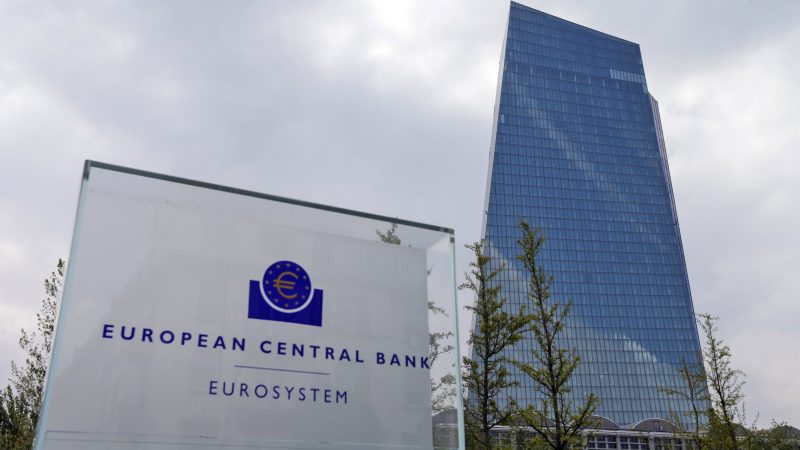The European Central Bank (ECB) recently extended its recommendation to banks on dividend distributions and share buy-backs until 1 January 2021 and asked banks to be extremely moderate with regard to variable remuneration. It also clarified that it will give enough time for banks to replenish their capital and liquidity buffers in order not to act pro-cyclically. This updated recommendation on dividend distributions remains temporary and exceptional and is aimed at preserving banks’ capacity to absorb losses and support the economy in this environment of exceptional uncertainty. This uncertainty makes it difficult for banks to accurately forecast their capital positions. As demonstrated by the vulnerability analysis the level of capital in the system could decline significantly if a severe scenario were to materialise.
The ECB will review whether this stance remains necessary in the fourth quarter of 2020, taking into account the economic environment, the stability of the financial system and the reliability of capital planning. Once the uncertainty requiring this temporary and exceptional recommendation subsides, banks with sustainable capital positions may consider resuming dividend payments. This will also apply when they are operating below the Pillar 2 Guidance (P2G) capital level. As a precondition banks’ projected capital trajectories must demonstrate that their capital positions are sustainable in the medium term.
For the same purpose, i.e. preserving banks’ capacity to absorb losses and support lending to the real economy, the ECB also issued a letter to banks asking them to be extremely moderate with regard to variable remuneration payments, for example by reducing the overall amount of variable pay. Where this is not possible, banks should defer a larger part of the variable remuneration and consider payments in instruments, e.g. own shares. As usual, the ECB will continue to assess banks’ remuneration policies as part of its Supervisory Review and Evaluation Process (SREP), in particular the impact that such policies may have on a bank’s ability to maintain a sound capital base. The ECB’s approach on dividends and remuneration complies with the related European Systemic Risk Board Recommendation.
The ECB continues to encourage banks to use their capital and liquidity buffers for lending purposes and loss absorption. It will not require banks to start replenishing their capital buffers before the peak in capital depletion is reached, which is currently expected to happen in 2022. The exact timeline will be decided following the 2021 EU-wide stress test, and, as in every supervisory cycle, on a case-by-case basis according to the individual situation of each bank.
The same applies for replenishing the liquidity coverage ratio (LCR). The ECB will consider both bank-specific (e.g. access to funding markets) and market-specific factors (e.g. demand for liquidity from households, corporates and other market participants) when establishing the timeline for banks to rebuild liquidity buffers.
In any case, the ECB commits to allow banks to operate below the P2G and the combined buffer requirement until at least end-2022, and below the LCR until at least end-2021, without automatically triggering supervisory actions.
“The build-up of strong capital and liquidity buffers since the last financial crisis has enabled banks during this crisis to continue lending to households and businesses, and thereby to help stabilise the real economy,” said Andrea Enria, Chair of the Supervisory Board. “Therefore it is all the more important to encourage banks to use their capital and liquidity buffers now to continue focusing on this overarching task: lending, whilst of course maintaining sound underwriting standards. Meanwhile, and to support banks with their planning, we are signalling a gradual return to normal.”
Finally, given that the banking sector has shown operational resilience, the ECB does not plan to extend the six month operational relief measures it granted to banks in March 2020, with the exception of non-performing loan (NPL) reduction strategies for high-NPL banks. The ECB will once again start to follow up with banks regarding prior remedial actions following earlier SREP findings, on-site inspections and internal model investigations. The ECB also plans to resume the issuance of targeted review of internal models (TRIM) decisions, on-site follow-up letters and internal model decisions once the six-month period is over.
The ECB will grant high-NPL banks an additional six months to submit their NPL reduction plans to provide banks with additional time to better estimate the impact of the Covid-19 pandemic on asset quality, which should enable more accurate planning. Banks are nevertheless expected to continue to actively manage their NPLs.
The ECB also issued a letter to banks communicating its expectations that banks have in place effective management practices and sufficient operational capacity to deal with the expected increase in distressed exposures. Further details on the supervisory measures are explained in the FAQs.
Source: European Central Bank (ECB)






